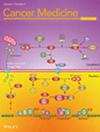Short- and Mid-Term Outcomes of Proximal Gastrectomy With Double-Tract Reconstruction Versus Total Gastrectomy in Early-Stage Proximal Gastric Cancer
Abstract
Background
Total gastrectomy (TG) is the predominant approach for proximal gastric cancer; however, it frequently leads to various postoperative nutritional and metabolic disorders. Recently, double-tract reconstruction (DTR) following proximal gastrectomy (PG) has been developed to preserve gastric function and reduce postoperative reflux esophagitis. This study aimed to compare the outcomes of PG-DTR with those of TG in patients with proximal gastric cancer.
Methods
Patients with clinically staged cT1 to cT2 proximal gastric cancer who underwent either PG-DTR or TG with Roux-en-Y reconstruction (TG-RY) were enrolled. Propensity score matching (PSM) was applied to reduce confounding bias. Surgical outcomes, nutritional status, reflux esophagitis, and prognosis were prospectively analyzed. Quality of life (QOL) was assessed at 3, 6, and 12 months postoperatively using the Postgastrectomy Syndrome Assessment Scale-45 (PGSAS-45).
Results
After PSM, 93 patients were included in each group (PG-DTR and TG-RY). The PG-DTR group had fewer retrieved lymph nodes than the TG-RY group. No significant differences were observed between the groups in operative time, blood loss, postoperative complications, length of hospital stay, reflux esophagitis, overall survival (OS), or disease-free survival (DFS). Female sex, preoperative BMI, TG-RY procedure, and severe postoperative complications (POCs) were identified as independent risk factors for malnutrition at 3 months postgastrectomy. Postoperatively, the TG-RY group exhibited significantly lower levels of hemoglobin, total protein, and albumin than the PG-DTR group. No differences were observed in postoperative QOL between the two groups, except for greater weight loss in the TG-RY group.
Conclusions
Compared to TG-RY, PG-DTR was associated with improved postoperative nutritional status, including better body weight, hemoglobin, and albumin levels, in patients with early-stage proximal gastric cancer. Additionally, PG-DTR demonstrated comparable short-term outcomes, prognosis, and postoperative QOL to TG-RY, further supporting its viability as a surgical option.


 求助内容:
求助内容: 应助结果提醒方式:
应助结果提醒方式:


